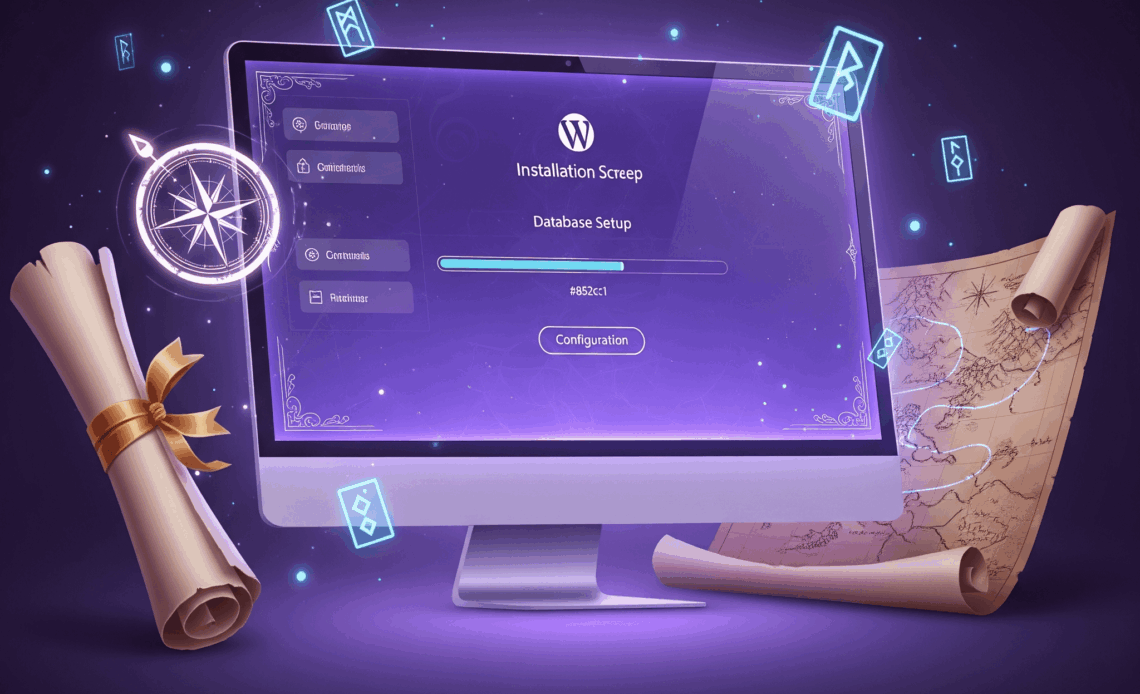
Installing WordPress is the first step towards building your own website or blog. Whether you want to create a personal blog, an online store, or a business website, WordPress makes it easy to get started. In this guide, we’ll walk you through the different ways to install WordPress, covering one-click installations, manual installations, and local setups.
What You Need Before Installing WordPress
Before we dive into the installation methods, here are a few things you’ll need:
- A domain name (e.g., yourwebsite.com)
- A web hosting provider that supports WordPress (e.g., Bluehost, SiteGround, or Cloudways)
- Basic understanding of FTP and databases (for manual installation)
- A local development environment (for local installation)
Method 1: One-Click Installation (Recommended for Beginners)
Most web hosting providers offer a one-click WordPress installation process, making it the fastest and easiest way to set up your site.
Step 1: Choose a Hosting Provider
Popular WordPress hosting providers include:
- Bluehost – Recommended by WordPress.org
- SiteGround – Excellent performance and support
- Cloudways – Great for managed hosting
Step 2: Access the Hosting Dashboard
Once you’ve signed up for hosting, log in to your hosting dashboard (e.g., cPanel, Plesk, or a custom dashboard provided by your host).
Step 3: Locate the WordPress Installer
Navigate to the WordPress installer in your hosting dashboard. Look for options such as:
- “Softaculous Apps Installer”
- “One-Click WordPress Install”
- “Install WordPress”
Step 4: Configure Your Site
You’ll be asked to fill in some details:
- Domain: Select the domain where you want to install WordPress.
- Site Name & Description: Enter your website’s title and tagline.
- Admin Credentials: Choose a username and a strong password.
- Database Options: Leave as default if unsure.
Step 5: Complete the Installation
Click “Install,” and within minutes, your WordPress site will be live. You can now log in at yourwebsite.com/wp-admin.
Method 2: Manual Installation (Advanced Users)
If you prefer more control over your WordPress installation, manual installation is the way to go.
Step 1: Download WordPress
Visit wordpress.org and download the latest version of WordPress.
Step 2: Upload WordPress Files
- Use an FTP client (e.g., FileZilla) to connect to your web server.
- Upload the extracted WordPress files to your server’s root directory (
public_html).
Step 3: Create a Database
- Log in to your hosting control panel and access MySQL Databases.
- Create a new database and user, and assign all privileges.
Step 4: Configure wp-config.php
- Rename
wp-config-sample.phptowp-config.php. - Edit it to include your database details:
define('DB_NAME', 'your_database_name');define('DB_USER', 'your_database_user');define('DB_PASSWORD', 'your_database_password');
Step 5: Run the Installation Script
Go to yourwebsite.com and follow the on-screen instructions to complete the installation.
Method 3: Installing WordPress Locally (For Development Purposes)
Installing WordPress locally allows you to test and develop your site without it being live on the internet.
Step 1: Install a Local Server
Choose one of the following local server solutions:
Step 2: Download and Install WordPress
- Extract the downloaded WordPress files into your local server’s
htdocsdirectory. - Open your local site (
http://localhost/wordpress).
Step 3: Create a Local Database
- Access
http://localhost/phpmyadmin. - Create a new database for WordPress.
Step 4: Complete the Setup
Follow the standard WordPress installation steps to configure your local site.
Common WordPress Installation Issues and Fixes
Here are some common installation problems and how to resolve them:
| Issue | Solution |
|---|---|
| “Error establishing a database connection” | Double-check database credentials. |
| White screen after installation | Disable plugins and themes via FTP. |
| Slow loading time | Use a caching plugin and optimise images. |
Recommended Hosting Providers
If you’re unsure which hosting provider to choose, here are our top recommendations:
- Bluehost – Affordable and beginner-friendly.
- SiteGround – Excellent performance and customer support.
- Cloudways – Great for scalability and managed hosting.
Join Our Free WP Odyssey Skool Community!
Want to ensure a smooth installation process and get expert support? Join our WP Odyssey Skool Community, where you’ll find free resources, step-by-step guides, and a community of like-minded learners.
Conclusion
Installing WordPress doesn’t have to be complicated. Whether you choose the one-click method, manual setup, or local installation, following this guide will help you get started with ease.
If you have any questions or need additional support, join our free WP Odyssey Skool Community for expert guidance and a friendly community ready to help!
